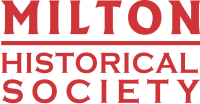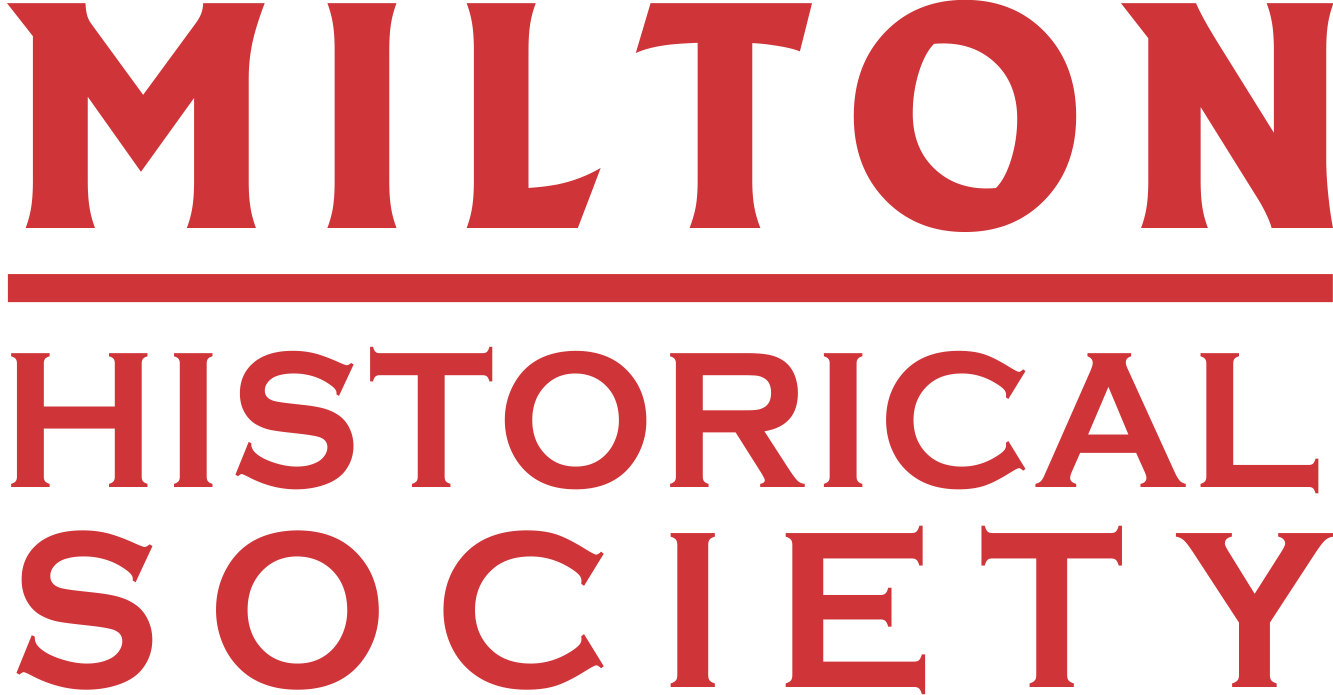A Very Short History of Milton
Until the early 1800’s, the Milton area was untouched land with the exception of a few aboriginal cornfields and small settlements.
The first Europeans arrived at this time – first the surveyors and then, in 1821, Sarah and Jasper Martin and their two young sons from Northumberland. They settled the area now comprising Martin Street and the Mill Pond north from Main Street. Here Jasper Martin started a gristmill using power from the 16 Mile Creek. The gristmill drew other settlers to the area: the Harrisons, Whitefields, Fosters, Greenias, Huffmans and Teetzels, and Milton gradually became the focus of a thriving farming community.
Elizabeth Harrison started the first school in the area of the Bronte Pioneer Cemetery. Dr. James Cobban was the first doctor, and George Brown opened a store and the first post office in 1836 on what would become Main Street. George Brown, Dr. Cobban and schoolmaster Fell chose the name “Milton” for the town in honour of the poet John Milton. The population was approximately 300. George Brown’s house is now situated next door to the Waldie Blacksmith Shop. It was moved to this location from its original site at Knox Presbyterian Church.
In the 1840s, the first churches were being built.
In 1851, Mathias Teetzel divided property into lots and offered them for sale (the Teetzel survey).
Development was rapid in the 1850s and 1860s. The first library was organized, the first newspaper appeared. John Martin built the large stone Town Hall and Market House (it now houses the Chamber of Commerce offices and others) and the first Halton Agricultural Society Fair was held.
In 1853 the village of Milton was designated the County Town of the new County of Halton to the annoyance of those communities situated along Lake Ontario. County buildings were built, such as the Court House and Jail (now the new Town Hall) and the Registry Office (now the Hugh Foster Hall). In 1857 the town was formally incorporated and an election was held to form a Town Council. The first meeting of the Council was on July 4, 1857. At this time, “Milton” was confirmed as the name of the town. George Brown was chosen as the first Mayor of Milton.
The proximity of Milton to the Escarpment led to the development of early extraction industries – stone burned for its lime and clay used in the manufacture of bricks for which the area was famous.
In the late 1870’s, the railway came to town and this led to new development. The Pioneer Cemetery outgrew its location on Bronte Street and in 1881 development began on the Evergreen Cemetery. In 1887, a waterworks system was installed and in 1891, electricity started to be installed. The telephone system began in 1893 with 14 subscribers.
Popular early sports were curling, cricket, lacrosse, baseball, hockey and cycling. Automobiles began arriving locally just prior to WWI. Highway 25 was not paved north of Milton until 1951.
In 1908, when Milton had a population of approximately 1500, Peter Lymburner Robertson opened a factory to produce socket headed screws, an enterprise which has given employment to hundreds of our citizens over many decades. Under the name of Robertson-Whitehead, the company still maintains offices and warehouses on Bronte Street .
The First World War was a time of great hardship. Many of our young people went to fight in Europe with the 164th Battalion and 71 did not return. The Memorial in Victoria Park was erected in their memory and also honours our dead from World War Two and Korea.
Since the Second World War considerable changes have taken place with new subdivisions providing housing and culminating in the present expansion which was made possible by the installation of the “big pipe” which brings water to Milton from Lake Ontario. The first new school for many decades was built in 1954 – the J. M. Denyes Public School. The Town’s first public hospital opened in 1959. Prior to this, Dr. Stevenson operated a private hospital for some patients and other patients went to Hamilton or Guelph .
At this time, Highway 401 was extended to Milton from Toronto and soon afterwards was continued westwards through the Escarpment. The proximity of Milton to this major highway led to more development.
In 1974, the boundaries of Milton were altered to include Campbellville and the township of Nassagaweya. Regional Government replaced County Government .
The early settlers of Milton and the surrounding districts were primarily from Scotland, Ireland, England and Wales and many of Loyalist descent coming up from the United States. During the 20th Century, we welcomed immigrants from all the European countries and from the Commonwealth countries. The 21st Century is bringing many newcomers from the Middle East, Asia, South and Central America . Milton continues to grow and the Milton Historical Society continues to collect, preserve and promote our history to ensure that our citizens may have a fuller understanding of this community.






